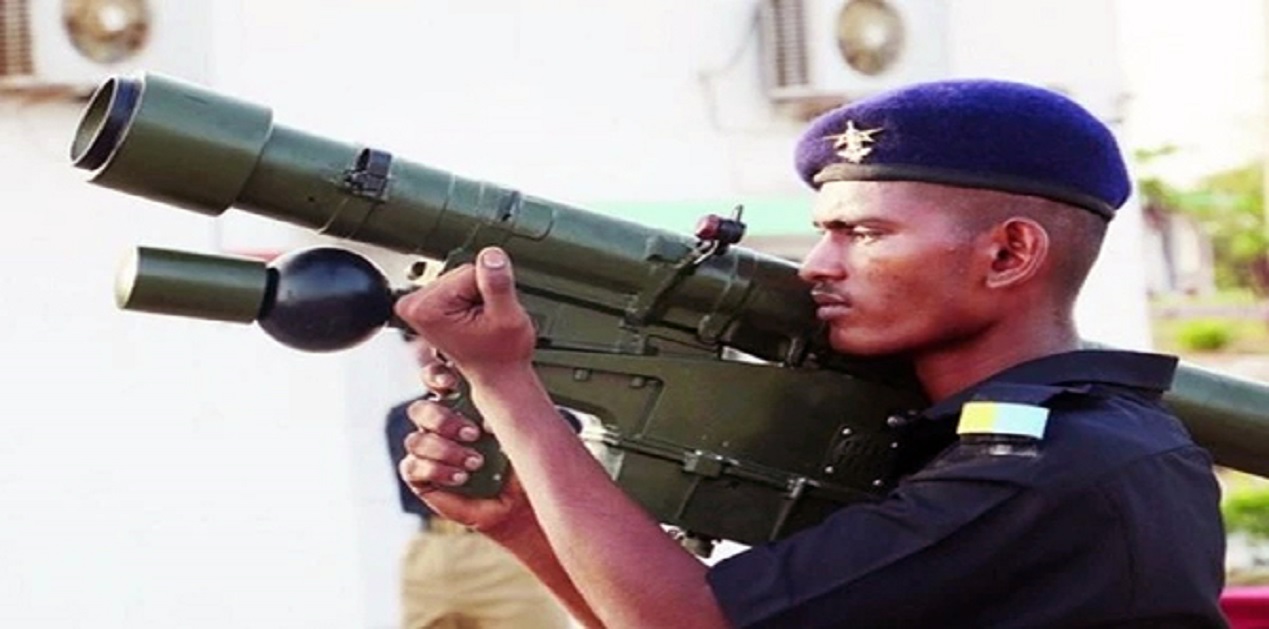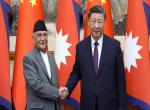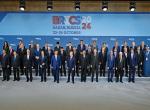The Driver
On 14 Nov 2023, the Russian media announced inking an arms deal with India which was a little different from the usual defence procurement cases. This deal is anchored on two provisions; the Supply of Igla S Man Portable Air Defence Systems (MANPADS) to India and permission to manufacture Igla S in India under license.[1]
This brief work attempts to find answers to the following posers:-
- What is so unique about the MANPADS in the hierarchy of Ground Based Air Defence Weapon Systems (GBADWS)?
- How is the current deal so special?
MANPADS: Setting the Perspective
The Three Pillars
Fundamentally, the air defence capability that aims to counter the air threat from the adversary be it on land, sea or air, rests on three pillars; viz. Sensors; Shooters; and Battle Management and Command and Control System. (BMC2).
In simplest terms, the sensors act as ‘eyes and ears’ by detecting the air threat, the shooters act as ‘kill means’ to deter and destroy the threat while the BMC2 makes the air defence battle happen; all in a matter of few fleeting minutes. Each of these pillars is a vertical in itself, easier stated in a sentence or two.
The BMC2 sits at the foundation. It not only cumulates the surveillance inputs from multiple radars and generates an Air Situation Picture (ASP) by fusing the multiple sensor inputs and removing the duplications. Out of the ASP, it recognizes which of these are adversary’s threat vehicles? What must be their priority of engagement based on comparative time-to-impact and lethality? Which weapons are most suitable to take them on? It thereafter passes the target data in near real-time to the selected weapon, grants clearance to weapons to engage, and thereafter continues to seamlessly shift fire from weapon-to-weapon till the threat is destroyed or deterred; all this and more in a few minutes. It is a lot of quick and precision work requiring highest of computation, display technologies, auto-processing and data transmission capabilities and more. Proud to say that the BMC2 for air defence in India is 100% indigenous. (further technical details not covered)
Similarly, the shooters are organized in a layered and tiered fashion. What does that mean? It means that the long ‘Fire Arm’ that extends from the terminal end out to 100s of Km is constituted of layers of weapons with their respective fire envelops expanding one over another. This ensures that once fire is opened on an air threat vehicle(s) of the adversary, it shifts weapon-to-weapon seamlessly across the fire arm from the longest range weapons to the terminal end till the threat is countered, preferably before the threat releases its lethal load.
Since the air threat can manifest in any domain singly or simultaneously, core-competent air defence capability covering all the three verticals exist in air, ground, sea and sub-surface (and in Space in near future). In our case the common thread (read control) of BMC2 across land-air-shore based air defence systems is under the Indian Air Force entrusted with the responsibility of the air defence of the nation. The Fleet at sea is responsible for its own air defence.
As stated, the Fire arm of the Ground Based Air Defence (GBAD) is a seamless grouping of weapons configured in a manner so as to deliver an unbroken punishment to the incoming threat. On the starting end of this fire arm are the weapons of a few km ranges called Very Short Range Air Defence Systems (VSHORADs; range up to 6-8 km). These are typically deployed at the terminal end of the protected assets. Over these the fire envelop that extends outwards is successively constituted by Short Range Surface-to-Air Missiles (SRSAMs; range 20-30 km), Medium Range SAMs (MRSAMs; range 40-100 Km) and Long Range SAMs (LRSAMs; range 100+ km). Since the fire envelopes of these weapons overlap one over the other, the pattern of deployment in a theater grid is called a layered and tiered pattern of air defence.
Superimposed over this theater grid is the overarching capability of a class of weapons that constitutes what is called the Ballistic Missile Defence (BMD). This capability is aimed to take out the ballistic Missile threat from the adversary (not elaborated further)
Apart from the above conventional fire arm there are special class of weapons that accompany mobile mechanized columns and provide air defence on move These include Quick Reaction SAMs (QRSAMs; range 5-30 km) and Self Propelled guns.
Cutting to the VSHORADs, this category basically includes the air defence guns and very short range SAMs. The ones out of these which can be carried by one/two persons are called MANPADS. These could be shoulder-fired or a group of them could be placed on a pedestal where a missile firer could fire one/more of them (salvo). Such a pedestal can be ground-based/vehicle based/tank based or ship-based.
MANPADS typically range from 3-8 km and are guided to the target using a number of guidance methods. These basically include IR seeking ( i.e. homing on to the target by locking on to the heat or Infra-Red (IR) signature of the target like the exhaust gases or engine/body heat); Laser beam riding ( where missile rides the laser beam illuminating the target); wire-guided missiles are getting obsolete. Most MANPADS have High explosive (HE) blast and fragmentation warheads which either explodes on impact (impact-fuzed) or if the missile passes within its kill distance to the target (proximity-fused). Certain MANPADS are optimized for hit-to-kill effect where these carry penetrators which cause a catastrophic damage on impact.
What MANPADS Bring to the Table?
Terminal end air defence battle is very critical and extremely fast-flowing. It encounters such resilient and strong threat that either has survived the entire fire arm and is now bearing heavy on the asset being protected or have surprised the system suddenly appearing dangerously close to the asset being protected. In an another variation, terminal battles could be unfolding all around the Tactical Battle Area (TBA) as duels between VSHORDS protecting mechanised elements from enemy’s air threat.
At terminal end, the requirement is of preponderance of accurate fire which must be fast and flexible. MANPADS do a great job in such scenarios. Here is how?
- MANPADS provide the much needed gun-missile mix at the terminal end. What is this mix? In the decades gone by, the norm was to provide terminal end GBAD by air defence guns alone, be it towed or self-propelled. As the air threat re-vamped over time to transform into a deadly punch delivered by 3rd-4th generation aircraft armed to the teeth and with stealth muscle, deadly attack helicopters (AHs) capable of flying in the nap-of-the-earth (hence remaining undetected) and delivering accurate fire popping up suddenly and dangerously, beyond visual range air-to-air missiles, lethal anti-radiation missiles capable of silencing the sensors, and a host of precision guided munitions. All this made the battle at the terminal end very intense and the gun fire alone proved vastly inadequate. That is where emerged the need for having a deadly combination of a guns and missiles at the last line of defence.
- Besides getting the much needed gun-missile mix, other advantages of using MANPADS are:-
- These provide the option of dynamic deployment, wherein a defender can inflict fire on the incoming threat from a totally unexpected direction hence getting the ‘off-side’ of the attacker.
- In certain typical terrain types (say high altitudes or mountainous terrain where the aerial attack can be launched from only one/two directions) MANPADS can be scaled up on heights and deliver debilitating fire suddenly and unexpectedly.
- MANPADS have a much shorter lay-n-fire cycle as compared to guns. Hence these prove ideal for responding to suddenly appearing threats such as AHs/drones etc.
- MANPADS permit a defender to be innovative in increasing the kill envelop by way-out deployment far outside the gun ranges and covering the inescapable avenues through which the attacker must pass (narrow valleys and steep passes etc.).
- With MANPADS on board, the defender is emboldened to take on a greater quantum of threat-volume and gain the capability to deal more effectively with the electronic warfare (EW) threat.
MANPADS and the Number Game
MANPADS actually provide an ideal tool for dealing with a far stronger air power.
A stronger air power will play it big by undertaking multiple type of air operations, viz. Counter Air Operations (CAO) to kill maximum of the adversary’s air assets on ground; Suppression of Air Defence (SEAD) to cripple the adversary’s air defence by blinding its eyes and ears (sensors) and taking out BMC2; ground strikes to take out pre-chosen/ impromptu/opportunity targets etc. A significant portion of this ‘air power play’ unfolds in the TBA where strike aircrafts and AHs undertake multiple missions to support the armoured and mechanized maneuver battles or undertake hunter-killer missions.
A resolute defender armed with the preponderance of MANPADS attempts to counter the above threat in this manner:-
- MANPADS are deployed in large numbers covering various nooks and corners in the TBA, some at predictable locations; many others struck unobtrusively in unpredictable locations.
- Since most of these MANPADS are fire-n-forget weapons these can operate nearly independently in the air space that is normally kept NO-GO for own/friendly aircrafts.
Strike aircrafts and AHs are loaded with all that is required to counter the air defence weapons. Besides stealth feature due to which these remain undetectable by the defender’s sensors, the air threat vehicles have radar warning receivers that warn when being tracked by adversary’s radars and missile warning receivers warning them that a missile has been launched at them, active (electronic/electro-magnetic) measures that can mislead the missiles to decoy targets, passive means (called windows , chaffs etc.) that can deflect heat-seeking missiles or confuse the radars controlling the fire of guns/ SAMs into locking on to the decoy targets.
Even with all this and more, MANPADS weigh heavy on the attacker. Why this number game? Simply put, such a proliferation of these weapons is ensured in the TBA that it simply overwhelms the countering capability of the strike aircrafts and AHs stated above.
The truth is, that with the best of situational awareness of the battlefield there will be some MANPADS in the folds of the TBA that will be able to spring a surprise on to a combat pilot; and that is where lies the magic of MANPADS in scoring disproportionate kills.
MANPAD Play in Russo-Ukraine War
To comprehend this, a bit of perspective is required:-
- The Russian pre-emptive strike in the wee hours of 24 Feb 2022, failed to achieve the following to the degree desired:-
- Destroying maximum of Ukrainian air assets on ground (CAO).
- Blinding air defence sensors and killing BMC2 adequately (SEAD).
- Due to the above, a mighty (10:1) air power like Russia failed to achieve even a Local Favourable Air Situation, leave aside air supremacy. Result -the air space over the Ukrainian battlefield remained contested (remains so till date).
- Be that as it may, the Russian juggernaut consisting of blitzkrieg type of thrusts by hundreds of tanks and mechanised vehicles was unleashed.
- The Russian air power (albeit operating in contested skies) initially weighed very heavy. Its strike aircrafts and AHs went deep into Ukraine and took out many targets in the typical hunter-killer missions.
(Many reasons for this partial success are not covered)
Slowly the tables started to turn by the cumulative play of three weapons- MANPADS, anti-tank missiles and drones. Getting to MANPADS, the events unfolded as under:-
- Ukraine under its own inventory had Russian origin MANPADS namely the 9K 32 Strela 2[2] ( 1970 vintage range 800m-3.7 km), 9K34 Strela 3 (1974 vintage , range 4.5 km), 9K38 Igla ( variations - 9K310 Igla 1 and 9k338 Igla S, 1980 vintage range 5-6 km) and 9K333 Verba ( 2014 vintage, range 6.5 km).
- These were augmented by FIM 92 Stinger MANPADS of US (1967 original version, upgraded several times thereafter - range 0.16 to 4.83 km). It is estimated that some 3000+ such missiles have been given by USA to Ukraine in three packages.[3]
- UK gave Starstreak missiles to Ukraine. This missile is a unique hit-to-kill MANPAD. Flying at 4 times the speed of sound, it is the fastest MANPAD in the world (range of 4.3 km). Its tungsten penetrators cause catastrophic damage to the target and the missile is simply not deceivable by such countermeasures like chaffs and flares deployed by many a strike aircrafts.[4]
- South Korea provided the Chiron-KP MANPAD- the longest ranged MANPAD in its class (1995 vintage, range 7 km).[5] French provided the Mistral (1974 vintage, range 6 km) and Marlet (2021 vintage, range 8 km) and the Germans provided the Strelas.
- All told, Ukraine was in possession of thousands of MANPADS. It deployed the same in large numbers in the TBA. Probably at every possible deployable location; both expected and unexpected. What was the result?
- In the early months of the war, a large volume of Russian air power was operating in the contested skies of the TBA. These mainly included the strike aircraft (SU 25,25SM, 27, 30, 35 and Migs 29) and AHs (Mi series- 8, 24,24P, 28, 35 and Kamov 51 and 52).[6]
- According to one open source report, the kills scored in the period 24 Feb -27 Jun 2023 was a whopping 39 aircrafts and 26 AHs. Even if corrected for misinformation, the residual numbers in this short period will be huge.
How such kills happened?
- Besides the kills on both sides in aerial combat, a large chunk went to the credit of MANPADs. How? 1. As stated, the numbers of MANPADS were so large that these simply overwhelmed the counter capability of air threat vehicles; and 2. The range and depth of MANPAD proliferation in the TBA was such that an odd one always remained undetected to be fired out from an unexpected location to claim its prey. The worst hit was the Kamov Fleet. According to one open source report as much as 25% of the entire Kamov Fleet (25/100) got downed.
- When you kill an aircraft or an AH, it is not only the machine that goes, but also and more importantly, it is the trained combat pilot that is lost too. While the machines can be returned back, trained pilots are not returnable in a fast turn-around as that require years of training.
MANPADS and India
It is now relevant to relate the MANPADS in our scenario and see where we stand. To do that, it will be prudent to see the MANPADs in their right perspective as one of the constituents of the GBADWS Fire arm.
In the current positive and energizing environment of Make-in-India and Atmanirbhar Bharat, it is stated with a degree of pride that that the above twin-drivers of India’s story have also touched GBAD in a significant measure. Following points are made:-
- As stated, GBAD Fire arm is configured over VSHORADs, SRSAMs, MRSAMs and QRSAM and BMD capability.
- Leaving the VSHORADs out, we proudly make our own SRSAMs – the Akash Weapon System. Even QRSAM is also close to realization on the indigenous route. Also we have our own MRSAM produced jointly with M/s IAI of Israel.
- We also have our indigenous BMD capability (Programme AD) realized way back and duly augmented by the imports of S-400 long range air defence and BMD system from Russia. (Contracted total 5 Regiments. Deliveries delayed due to Russo-Ukraine War. Like completion early 2024).[7]
The area where we lagged is the VSHORDs. Following points are stated:-
- Finding a successor to the two mainframe air defence guns, namely the
L-70, as well as, the ZU 23-2 has eluded the Army Air Defence for nearly three decades. At a point in time we came very close to procuring the best towed air defence gun at that point in time but the deal could not go through. (Details are classified) - It is a dare to our defence industry to give to the forces a state-of-the-art towed air defence gun – and not a retrofit product improvement model. The Forces deserve it.
Our MANPAD story leaves a lot to be desired. Following points are stated:-
- To give a fillip to our MANPAD holdings of Strela 2 and Iglas across the three Services (quantum deficiencies not stated) there have been multiple efforts to procure the Iglas from the Russians as far back as 2003-04. That didn’t see the light of the day. The issues were many- costs/ contract terms and more (details classified).
- Following the above, sometime in 2009-10 a new case started for the procurement of VSHORDS. There were three vendors MBDA (French led consortium), Rosoboronexport (Russia) and SAAB (Sweden) fielding Mistral 2, Igla S and RBS 70 NG VSHORADS, respectively.
- All the three were front-ranking MANPADS. Mistral is an infrared homing fire-n-forget SAM with an effective range of 6 km and altitude ceiling of 3500 m. Igla 1S is a product-improvement on the basic Igla MANPAD. It is a heat-seeking MANPAD with a range of 6km and altitude bracket of 10-3500m. The Swedish RBS 70 NG is a laser beam riding missile with a range bracket of 250m-8 km and altitude of 5000m.
- The negotiations, trials and retrials of the above case covered the period 2010-2017/18. Many ups and down happened but the result at the end remained inconclusive (details are irrelevant to this work).[8]
- Sometime around 2017/18, when the 10 year old VSHORAD case proved a NO-GO, DRDO started to work on its own indigenous VSHORAD MANPAD. It had an operational range from 250m to 6 km and flew supersonic at 1.5 Mach. The missile was tested successfully on 27 Sep 2022 and a repeat test on 14 Mar 2023.
To continue the above indigenous drive and to augment capabilities so as to make enough MANPADs to meet the tri-Service requirement has led to the current deal with Russia. Following points are stated:-
- As stated, on 14 Nov 2023, India and Russia signed a deal whereby Russia will supply Igla S VSHORADs to India; the uniqueness of this deal lies in the fact that the Russia has also allowed domestic production of Igla S in India under license. The Indian partner is likely to be a private player. It is a huge development.[9]
Why this development is so important?
- It is not a pure buy deal; it is a manufacturing deal on a JV probably. A macro example up on this line is BrahMos.
- Manufacture under license means transfer of Technology (ToT) with some pluses and minuses of course (some critical portion being perpetually with Russia). That said, getting a ToT of a weapon like Igla S is like moving many notches up the self-reliance ladder.
- With twin verticals open up (own through the DRDO and Igla on license production) we would be able to make up the existing tri-Service deficiencies in a faster time frame.
- India’s air defenders are no strangers to Igla. We actually started with its predecessor (Strela 2) in the seventies, following up on Igla form 80s onwards. A boost on the Igla route will be adapted to, very naturally.
- What we will be getting is an advanced version of Igla. The contracted missile Igla S has a better range than its earlier versions Igla 1 -5 km, Igla 5.2 km, Igla S 6 km).
- Over the years, in-house production under license may grow wings of strengths with mutually beneficial deals emerging – export to other counties, simulator support to other countries, spare support, repair support, training support … the canvas is wide open.
References
[1]“Russia India sign deal on supply, production of Igla air Defence systems,” at www.timesofindia.com. Accessed on 24 Nov 2023.
[2]“9K 32 Strela” at www,en.m.wikipedia.org .accessed on 01 Dec 2023. ( same for all other missiles asmentioned)/
[3]“Ukraine defence package includes missiles air defences,” at www.defense.gov. accessed on 01 Dec 2023.
[4]“Starsteak: what is the UK made weapon being used in Ukraine..<” at www.euronews.com.Accessed on 01 Dec 2023.
[5]“Chiron-KP SAM,” at www.en.m.wikipedia.org. Accessed omn 01 Dec 2023.
[6]“An year of air and air defence war,” at www.vifindai.org. Accessedc on 02 Dec 2023.
[7]Five S -400 regiments expected to be delivered by early 2024,”atww.thehindu.com. Accessed on 03 Dec 2023.
[8]“Even as low bidder Russia’s Rosoboronexport may still loose air defencedeal,” at www.densenews.com. Accessed on 03 Dec 2023.
[9]“Russia India sign deal on supply, production of Igla air defence system,” at www.m.timesofindia.com. Accessed on 03 Dec 2023.
(The paper is the author’s individual scholastic articulation. The author certifies that the article/paper is original in content, unpublished and it has not been submitted for publication/web upload elsewhere, and that the facts and figures quoted are duly referenced, as needed, and are believed to be correct). (The paper does not necessarily represent the organisational stance... More >>
Image Source: https://imrmedia.in/wp-content/uploads/2022/04/An-Indian-Army-soldier-handing-the-Igla-S-MANPADS.jpg










Post new comment